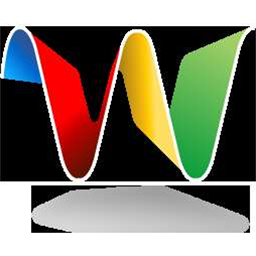The only surprise in Google canning its Wave experiment this week was that it took so long for the search-advertising giant to pull the pin.

The collaborative, wiki-esque service and its underlying protocols launched with much fanfare in in May last year by the famed Sydney creators of Google Maps was an example of a service too difficult to define and a tool you couldn't easily get your mates to use.
From Google's Wave website: "A wave is equal parts conversation and document. People can communicate and work together with richly formatted text, photos, videos, maps, and more". Huh?
But it was the "more" that was a big part of the problem: What was Wave and why would punters rush to use it over what they were using already? On its release I was optimistic that it would catch on but said that such a "tectonic shift" in how people collaborate online was a "lot to swallow".
Wave was more sleeper app than killer app.
Was it email? Wave users had Gmail or their corporate or other personal email accounts for that and history shows that once an email is on a business card or used as a login for a website the user is rusted on to that address.
Wave promised features reminiscent of instant messaging and Twitter, going a step farther because you could see what someone was typing in real time. But was that really a bonus, to see someone's fumbles as they mashed keys together with hamfisted abandon?
Was it a wiki or photo-sharing service like Flickr?
And why would a Facebooker, for instance, turn their back on their wall to get their toes wet with Wave? Or why would an IT manager switch from Microsoft Sharepoint, IBM Lotus Notes or Atlassian's Confluence to paddle about in the Google wading pool?
Wave lacked what colleagues call a "unique selling proposition". How was it an order of magnitude better than those other services? Such complexities confused users who seemed to put it in the too-hard basket or an experiment for another day rather than to be immediately integrated into their daily routines. User interaction specialists and designers understand this concept, what design guru and inspiration to Apple's Jonny Ive, Dieter Rams, called the "less is more" concept.
Wave was more like Play-doh for the mind; it was all these things and more, its shape only limited by imagination.
And because of its boundless potential it needed parameters in the form of templates, for instance, and a lot more case studies about how you could you use it out of the box. Users needed their hands held in the early phases - which was a lot more than Google's Field of Dreams approach could offer.
These are user considerations that software companies such as Microsoft and Apple understand. With their products, it's entirely possible for a user never to create a template but just adapt those provided. Wave demanded commitment, which wasn't a bad thing in a power user, but Google never articulated well its unique proposition.
Why use Wave when there were other competing Google applications such as Gmail? Google confronted a similar case of conflicted loyalties when it started preferencing its imported YouTube property over its home-grown Google Video service.
And the lack of a good mob of people with whom to collaborate was Wave's Achilles heel; users complained they couldn't get their mates and colleagues on to it. It was like the party in the swankiest bar in town but you're the only one there.
Perhaps in an effort to conserve resources Google made the decision to limit who and how many could get on the service, which made it difficult to get a critical mass of friends and followers together to collaborate on a project. And that hobbled adoption out of the gate.
Like technologies such as the telephone, fax machine, email, video conferencing and even instant and social messaging, Wave required what Wired founding editor Kevin Kelly famously called the "network effect". There was never a telephone prototype because Alexander Graham Bell had to make two to kickstart the network. As nodes were added, the value of the network grew.
In simple terms, there's no point having a phone (or Wave) if there's no one to take your call (or accrete your wave).
But Google is smart to keep talent fought so hard to assemble in a competitive environment. Those engineers and designers will be shunted on to other projects, Google says.
As we saw with Google's brush with privacy authorities over its wi-fi snooping, we can expect that it will reuse, recycle and redeploy code in other projects. So expect some Wave flotsam - especially its foundation protocols such as real-time text entry and drag and drop - to wash up on the shores of Gmail and other projects such as its nascent social-networking platform, Buzz.
And because those protocols are open source, we may see them redeployed in unexpected ways in products from other providers as happened when Netscape's Jamie Zawinski pushed for what he called Navigator's "lifeboat" that found its way to dry land as Mozilla Firefox.
And for those former Wave coders with a hankering to write the next generation of collaborative software who feel the search-advertising giant isn't scratching their itch, I hear there's an Australian company a brisk walk across the Pyrmont bridge with $68 million in cash just waiting for your wave, errm, email.


_(22).jpg&h=140&w=231&c=1&s=0)
.png&h=140&w=231&c=1&s=0)





_(26).jpg&w=100&c=1&s=0)

 iTnews Executive Retreat - Security Leaders Edition
iTnews Executive Retreat - Security Leaders Edition












_(1).jpg&h=140&w=231&c=1&s=0)



